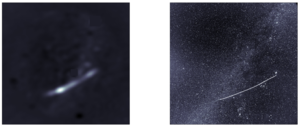Dr. Kenneth Obenberger (US Air Force Research Lab., USA) "Meteor Radio Afterglows: Observations and Theory"
Dr. Kenneth Obenberger (US Air Force Research Lab., USA) will deliver a talk on 9th June 2022 in IAP colloquium on the topic, "Meteor Radio Afterglows: Observations and Theory"
The talk will focus on the following: In 2014 we discovered that occasionally, bright meteors produce a long lasting (>10 s), broadband radio afterglow in the HF and VHF bands. We call these events meteor radio afterglows (MRAs). The initial discovery was made using the all-sky imaging capabilities of the Long Wavelength Array (LWA) radio telescope in New Mexico, but recent results from the low frequency array (LOFAR) show MRAs can be detected in Europe as well. Despite being able to characterize many of the physical parameters, we still do not have a clear picture of what is producing the radio emission. Recently, however, we have been investigating a promising emission mechanism known as resonant transition radiation. Here, suprathermal electrons moving through the steep density gradients of a turbulent plasma produce emission due to the dramatic changes in the local speed of light. This theory requires a source of suprathermal electrons, which has led us to investigate the possibility that negatively charged meteoric dust particles could kick off hot electrons when oxidized. Evidence suggests that MRAs are associated with optical chemical luminescence (persistent trains), a phenomena that is likely driven by the same or similar reactions













